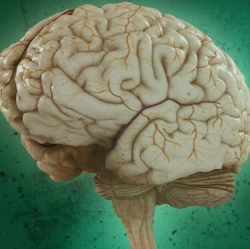
Elon Musk has launched a California-based company called Neuralink Corp., The Wall Street Journal reported on Monday, citing people familiar with the matter, to pursue “neural lace” brain-interface technology. Neural lace would help prevent humans from becoming “house cats” to AI, he suggests.
“I think one of the solutions that seems maybe the best is to add an AI layer,” Musk hinted at the Code Conference last year. It would be a “digital layer above the cortex that could work well and symbiotically with you.
“We are already a cyborg,” he added. “You have a digital version of yourself online in form of emails and social media. … But the constraint is input/output, we’re I/O bound … particularly output. … Merging with digital intelligence revolves around … some sort of interface with your cortical neurons.”
Reflecting concepts that have been proposed by Ray Kurzweil, “over time I think we will probably see a closer merger of biological intelligence and digital intelligence,” Musk said at the recent World Government Summit in Dubai.
Musk suggested the neural lace interface could be inserted via veins and arteries.
KurzweilAI reported on one approach to a neural-lace-like brain interface in 2015. A “syringe-injectable electronics” concept was invented by researchers in Charles Lieber’s lab at Harvard University and the National Center for Nanoscience and Technology in Beijing. It would involve injecting a biocompatible polymer scaffold mesh with attached microelectronic devices into the brain via syringe.
The process for fabricating the scaffold is similar to that used to etch microchips, and begins with a dissolvable layer deposited on a biocompatible nanoscale polymer mesh substrate, with embedded nanowires, transistors, and other microelectronic devices attached. The mesh is then tightly rolled up, allowing it to be sucked up into a syringe via a thin (100 micrometers internal diameter) glass needle. The mesh can then be injected into brain tissue by the syringe.
The input-output connection of the mesh electronics can be connected to standard electronics devices (for voltage insertion or measurement, for example), allowing the mesh-embedded devices to be individually addressed and used to precisely stimulate or record individual neural activity.
